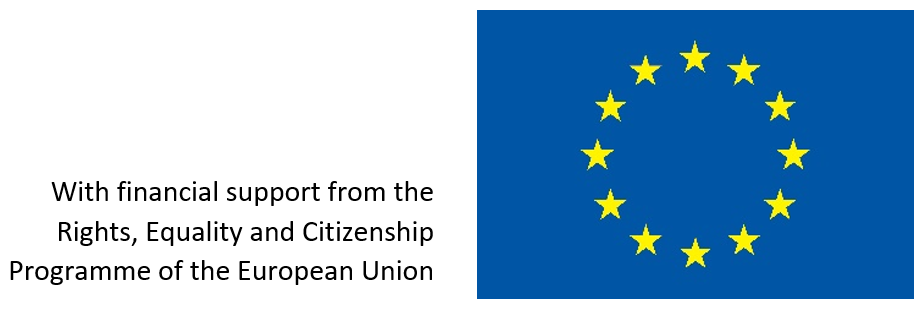Maria Lassnig (1919–2014) is a worldwide recognized artist from Austria, and moreover one of the most important women painters from the 20th century. She was an original exponent of expressionism, with some influence of surrealism and cubism.
Maria was born in Kappel am Krappfeld, Carinthia, southern Austria on the 8th September of 1919, and she studied at the Academy for Applied Arts in Vienna during World War II. There she learned about the realist art movement, but after 1945, she began dedicating herself to expressionism, being inspired mostly by the Austrian painter Oskar Kokoschka. In this period, she developed different self-portraits, some of them being close to abstract paintings; for example, she painted herself as a chair, saying about it “I was sitting in a chair and I felt it pressing against me. I still have the drawings where I depicted the sensation of sitting”.
Afterwards, Maria started an interior artistic journey with “body awareness painting”, called “Körpergefühlmalerei” in German, a term she coined in 1948. This type of painting involved her painting herself focusing every time on the different parts of her body that she was feeling and working with at that moment. Many of her self-portraits use unnatural colors or depict figures that are missing body parts. In 1951 she moved to Paris, and there she delved deeper into this new theme by producing hundreds of self-portraits, and developing a new technique while painting herself, kneeling or lying on the canvas to intensify the connection with the art and the body sensations, using mainly green and blue color spectrums. The main focus of her art during this time period was always the present sensations of the body.
In 1968 she moved to New York, and she introduced the feminist concept in her art-frames. She said she relocated to the United States because she believed it to be the “country of strong women” at that time. A series of Kitchen War paintings from the 70s critique women’s relationship with domesticity, in some of her self-portrait of that time she represented women trying to express the power and their empowerment. The painting Women Power in which she portrayed herself naked walking though the skyscrapers of New York as a giantess is especially stunning. She was critic of the family role imposed on women, and she herself never married or had children. She said about this “When I was young, I was clever enough to know that if I got married or had children, I would be eaten”, but in the latest stage of her life she regretted her being too radical in this sense, talking about the struggle of women who have to choose between family and career because “…children and painting – for me at any rate (people said) that would have been impossible”. In New York she also studied animated film at the School of Visual Arts, and during this time she created six short-films.
In 1980 she returned to Vienna, invited to be the chair of the Academy of Applied Arts, where she became the first female professor of painting at a German-speaking university. She was the first female artist to win the Grand Austrian State Prize in 1988 and was awarded the Austrian Decoration for Science and Art in 2005. In 2013 she was awarded the Golden Lion lifetime achievement award at the Venice Biennale.
She had an original style when it came to art-pieces, being part of the expressionist and surrealist movements. Her main topic was the transposition of the body and the experience of related human sensations into art forms, focusing herself mainly on the ears and the aspect of sound. She put her own body at the center of her art, feeling it, and trying to express the body experiences with her paintings. When looking at her art-works, the audience can recognize the presence of other themes such as the concept of identity, science fiction, animals, technology, and how people relate to violence and war. She expressed herself by using the woman-experience framework, being a woman living the 20th century, and focusing on women’s perceptions in relation to physical feeling, body language, and gender relations.
She celebrated the female body throughout her entire artistic career.
Maria died on the 6th of May, 2014 and since her death, her art-works were shown at the Fondacio Tapies in Barcelona (2015), Tate Liverpool (2016), the Albertina Museum, Vienna (2017 and 2019), the National Gallery in Prague (2018), Kunstmuseum Basel (2018), and Stedelijk Museum Amsterdam (2019).
Written By Intern Martina Fontana
Sources:
Banks, Grace. “The Feminist Artist Who Created The Selfie Nearly 100 Years Ago.” Forbes, Forbes Magazine, 8 July 2019, www.forbes.com/sites/gracebanks/2019/07/05/the-feminist-artist-who-created-the-selfie-nearly-100-years-ago/#6c65485b6b83
Hughes, Kathryn. “Maria Lassnig: under the Skin.” The Guardian, Guardian News and Media, 14 May 2016, www.theguardian.com/artanddesign/2016/may/14/maria-lassnig-under-the-skin
“Maria Lassnig. Ways of Being.” The Albertina Museum Vienna, www.albertina.at/en/exhibitions/maria-lassnig/
Moyer, Carrie “Maria Lassnig. The pitiless Eye”, Art in America, January 2009, prod-images.exhibit-e.com/www_petzel_com/cd1a47ef.pdf
Rosenberg, Karen. “A Painter, Well Aware, Takes Twists and Turns.” The New York Times, The New York Times, 27 Mar. 2014, www.nytimes.com/2014/03/28/arts/design/maria-lassnig-celebrates-the-artist-at-moma-ps1.h






